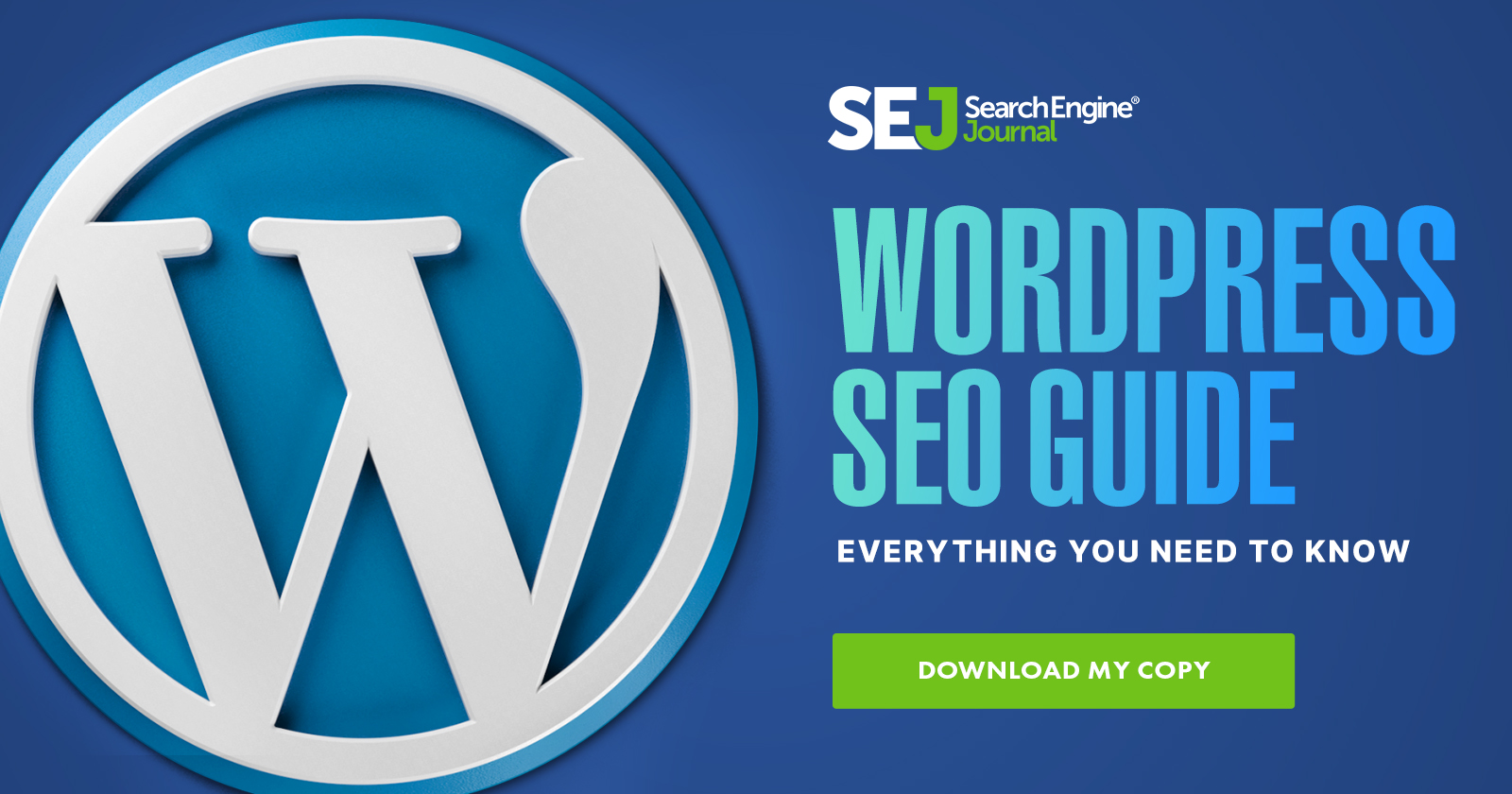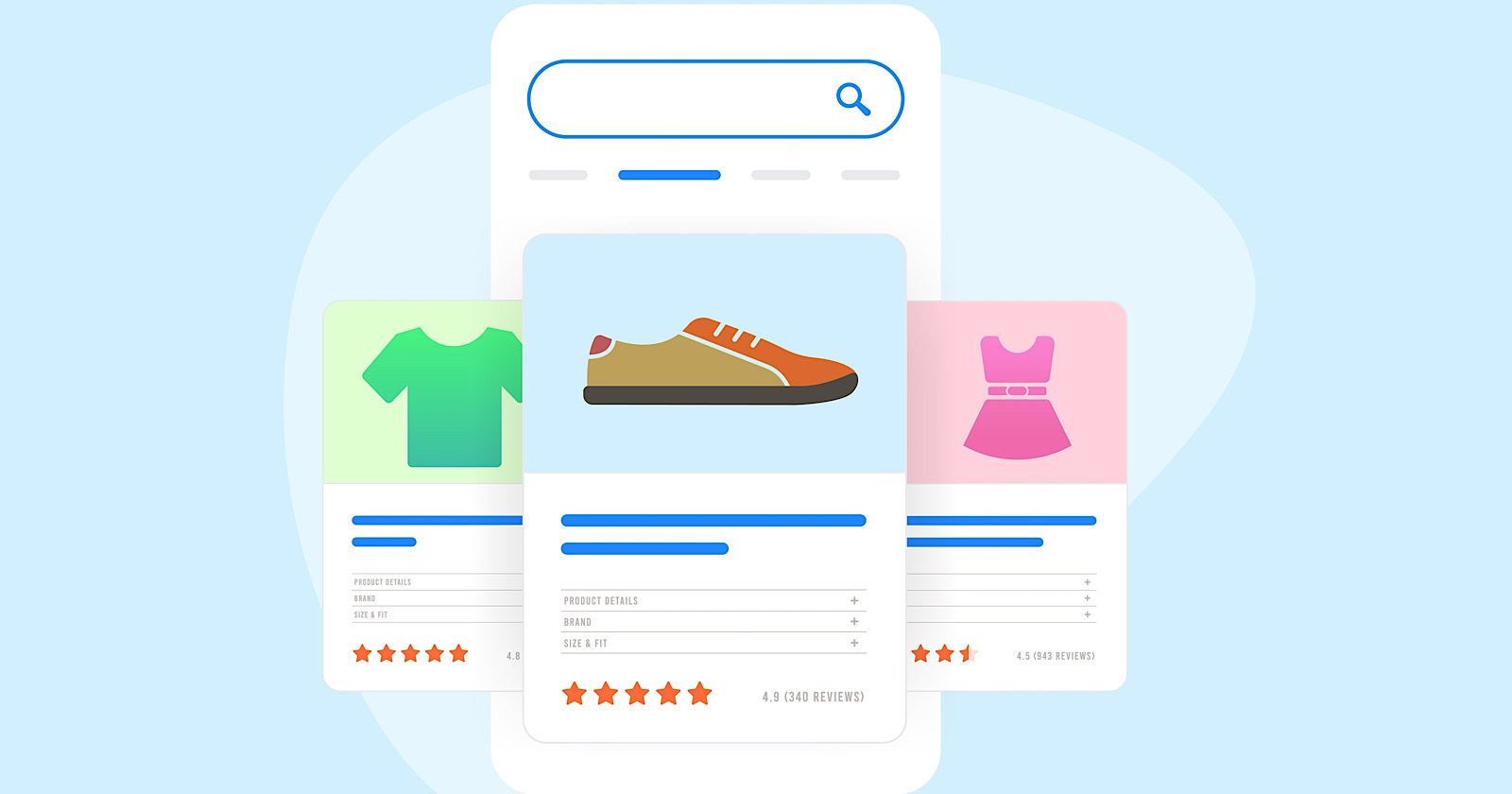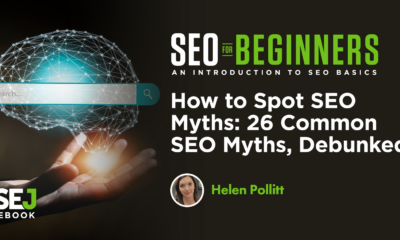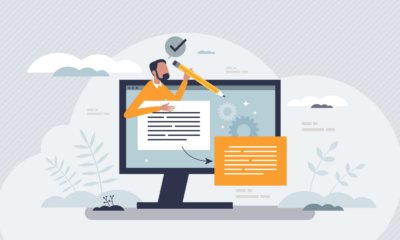SEO
Everything You Need To Know

Maybe you’ve heard colleagues or industry experts talking about Microsoft Clarity. But what is it and how does it work?
Microsoft Clarity is a user behavior and website debugging analytics tool unlike any other.
What Clarity does is provide insights into how users interact with the site, making it completely different from other analytics tools, including Google Analytics.
Learn about its various features, limitations, why it’s not a competitor to Google Analytics, and how you can make the best use of Microsoft Clarity here.
User Experience Analytics
Other analytics tools focus on things like reporting on traffic, keywords, page popularity, and so on.
Microsoft Clarity focuses on the user experience to help publishers gain insights into how users are interacting with their site.
The user behavior data helps publishers identify areas to improve, find web page bugs, and gain insights into conversions, among many other useful insights.
Microsoft Clarity even provides machine learning and deep AI components in the background that automatically generate insights based on patterns created by website user behaviors. It provides these insights as suggestions for further investigation and tracking.
With Clarity, a publisher can see user engagement patterns on different parts of individual pages and can play back user sessions to learn how users interact with web pages.
Over 25 filters make it easy to zero in on user pain points to debug website issues or discover what works in order to replicate that experience on other pages.
All of these insights are delivered by Microsoft Clarity in near real-time.
Microsoft Clarity Versus Google Analytics
You might wonder whether you need Microsoft Clarity if you already have Google Analytics. Some believe that because they’re both analytics services, there may be overlap between the two.
However, there really is no comparison between Google Analytics and Microsoft Clarity because they do very different things.
Google Analytics provides insights into traffic patterns.
Microsoft Clarity provides actionable insights into how users interact with web pages.
Microsoft Clarity is not a competitor of Google Analytics. Instead, it actually complements Google Analytics to the point that you can connect Google Analytics to Clarity and gain even more user behavior insights using the imported data.
Privacy Compliance
Although Microsoft Clarity tracks user behavior on the website, Clarity is fully compliant with the European GDPR and the California CCPA privacy requirements.
Microsoft Clarity Impact On Page Speed
Microsoft Clarity’s JavaScript is loaded asynchronously and, according to Microsoft, does not impact website performance.
“Visitors to your site won’t experience any difference in site speed or performance. The Clarity JavaScript is asynchronous so it does not slow down the page load time.”
Does Microsoft Clarity Have Traffic Limitations?
There are no limits to the amount of traffic that can be measured by Clarity.
Unlike other heatmap and analytics tools that impose traffic limits to the free versions of their tools, Microsoft imposes no limits based on traffic.
According to Microsoft:
“There are absolutely no limits on the number of sites per account. Clarity can scale to support even the largest websites.
Clarity process more than 1 petabyte of data from over 100 million users per month. Also, there are no traffic limits on these sites.”
Microsoft Clarity Features
The main features of Microsoft Clarity are:
- Clarity Heatmaps.
- Session Recordings.
- Clarity Insights.
Clarity Heatmaps
Clarity Heatmaps provides two kinds of heatmap data:
1. Click Heatmaps
Click heatmaps:
- Show engagement levels of different parts of a webpage.
- Reveal where people are clicking (including non-clickable page elements).
- And provide an idea of which page elements are important to most site visitors.
Click heatmap data can be shown for a single page or for a group of pages.
This data can be further refined and segmented with filters to drill down and see how different users are clicking on web page elements.
2. Scroll Heatmaps
Scroll Heatmaps show how far users are scrolling on a web page. Like all the other Clarity features, filters can be applied to the Scroll Heatmap in order to see how different users scroll through a page – by device, for example.
Scroll Heatmap data is incredibly useful because it can show how far users are scrolling before they click a call to action.
The Scroll heatmaps can also help identify if users aren’t reaching a call to action or important information.
If users aren’t reaching certain content and are backing out of the site without converting, then the scroll heatmap data will show at which point users are bailing on your site.
Actionable Heatmap Data
The Clarity Heatmaps can be segmented by filters such as traffic sources, devices, and browsers to identify patterns displayed by different visitors.
The heatmap data is useful for debugging web page issues by identifying where they are clicking, better understanding the user experience, and identifying where users linger.
Additionally, it helps to improve conversions by showing where users are bailing or if call to actions are scrolled past and not stimulating clicks.
In my opinion, the most important quality of the Clarity Heatmaps feature is helping to improve conversions because most sites have a conversion action they want users to complete whether it’s clicking an ad, buying a product, clicking an affiliate link, or signing up for a newsletter.
The Clarity Heatmap helps debug conversion issues and improve them.
The information in Clarity Heatmaps can also be shared with others in your company and with clients.
There are no traffic limits to the Clarity Heatmap feature, which makes it an attractive feature for publishers with large amount of traffic and those starting out.
Session Recordings
Clarity session recordings is a feature that records and plays back user journeys through the web site. It shows how users interact with site navigation, calls to action, search features, and other on-page elements.
Session recordings shows publishers if site navigation and links help users find the content they want and can also show what on-page factors aren’t working, like the calls to action.
 Screenshot of a User Session Timeline, October 2020
Screenshot of a User Session Timeline, October 2020The session recordings can identify rage clicks, dead clicks, quick backs, and excessive scrolling.
Rage Clicks
Rage clicks indicate areas of a web page that may not be interactive when a user expects them to be. The typical rage click is characterized when a user repeatedly clicking on a web page element like a link, button, or image.
For example, if a link isn’t working because the page hasn’t fully loaded or an image seems like a link but it isn’t one at all. Rage clicks are highlighted by Clarity to point out areas of the user experience that indicate user frustration with the web page.
Dead Clicks
A dead click is what happens when an interactive element does not respond in a reasonable amount of time or doesn’t respond at all.
This is also a signal of user frustration.
Quick Backs
The quick back is when a user clicks away from your site to another site but then returns.
Microsoft indicates that this data point will be updated to include the origin site so that it will record when a user clicks from one page in a site to another page in the same site and then returns to the original page, indicating dissatisfaction with the page they clicked to.
Excessive Scrolling
Session recordings can also reveal what Microsoft calls “excessive scrolling.”
Excessive scrolling is when Clarity detects that a site visitor scrolls up and down in an unusual pattern that indicates a poor user experience.
This data point could indicate that the user is not finding what they expect to find and is likely frustrating the site visitor in some other way, enough to cause them to leave the site.
Clarity Session Recordings provide valuable insights that can help increase sales, affiliate clicks, ad clicks, and site visitor satisfaction.
A useful feature of Session Recordings is that these data points can be segmented by browser, campaign, and 23 other filters.
Clarity Session recordings is a powerful way to gain insights into user behavior and improve web page and website performance.
 Screenshot of the Recordings Dashboard, October 2020
Screenshot of the Recordings Dashboard, October 2020The session timeline, shown in the screenshot above, is like a movie of the user interaction with a page. Cursor movements are shown.
The session panel on the left allows a publisher to filter the data to isolate a wide range of data types.
The individual sessions seen in the boxes can be selected and viewed.
Additionally, one can click on the Filters button at the top in order to select for a large amount of data types, like user device and so on.
Clicking on the Filters button results in an entire web page of filters.
To save space and provide a closeup, I sliced the filters page in half, a left side and a right side.
 Screenshot of the Left and Right Side of the Filters, October 2020
Screenshot of the Left and Right Side of the Filters, October 2020Clarity Insights
Microsoft Clarity Insights is a feature that applies the power of Deep AI and Machine Learning algorithms to automatically surface actionable insights from the analytics data collected by Clarity.
 Screenshot of Insights Dashboard, October 2020
Screenshot of Insights Dashboard, October 2020Clarity watches for session recordings with JavaScript errors, rage clicks, and dead clicks, as well as identifies browsers and also user groups to watch.
Users can save groups for tracking.
The Clarity Insights documentation says:
“Clarity Insights are a set of Machine Learning (ML) based filters and recommendations on what content should be most important for you.
…Through the dashboard, you can understand the users without having to analyze the ocean of data derived from user interactions on the website.
There comes a central question: If Clarity can record every user interaction, how can it surface the sessions and pages that matter the most? One solution comes via the Clarity Insights platform.
Clarity Insights lean on Microsoft’s decades of experience in Data Science and Machine Learning to identify key trends and patterns in your site activity.
…Providing accurate, accessible, and proactive analytics is a foundational feature of Clarity.”
 Screenshot of a closeup of the Microsoft Clarity “Insights” dashboard, October 2020
Screenshot of a closeup of the Microsoft Clarity “Insights” dashboard, October 2020Adding Microsoft Clarity Analytics To Your Stack
The big question many have is whether they should use Clarity considering that they already use another analytics program.
Clarity provides actionable insights for improving website earnings and the user experience, which is something many analytics programs do not provide.
It’s clear that Microsoft Clarity is not a competitor to Google Analytics, it is complementary to it.
Thus, it could be said that it is not appropriate to compare the two because they both solve different problems.
Clarity is a good product because it helps publishers improve conversions and sales, as well as the site visitor user experience.
What Clarity does is to help publishers identify shortcomings in their site(s) and improve them.
There is no pricing model for Microsoft Clarity – it is free, regardless of how much traffic a site attracts.
The only limitation to Clarity is that financial, government, and medical websites are not recommended by Microsoft to onboard to Clarity.
The answer to the question of whether you should use Microsoft Clarity, aside from the above caveat, depends on how important it is to you to improve earnings and site visitor user experience.
Citations:
More resources:
Featured Image: Ollyy/Shutterstock
SEO
Google Cautions On Blocking GoogleOther Bot

Google’s Gary Illyes answered a question about the non-search features that the GoogleOther crawler supports, then added a caution about the consequences of blocking GoogleOther.
What Is GoogleOther?
GoogleOther is a generic crawler created by Google for the various purposes that fall outside of those of bots that specialize for Search, Ads, Video, Images, News, Desktop and Mobile. It can be used by internal teams at Google for research and development in relation to various products.
The official description of GoogleOther is:
“GoogleOther is the generic crawler that may be used by various product teams for fetching publicly accessible content from sites. For example, it may be used for one-off crawls for internal research and development.”
Something that may be surprising is that there are actually three kinds of GoogleOther crawlers.
Three Kinds Of GoogleOther Crawlers
- GoogleOther
Generic crawler for public URLs - GoogleOther-Image
Optimized to crawl public image URLs - GoogleOther-Video
Optimized to crawl public video URLs
All three GoogleOther crawlers can be used for research and development purposes. That’s just one purpose that Google publicly acknowledges that all three versions of GoogleOther could be used for.
What Non-Search Features Does GoogleOther Support?
Google doesn’t say what specific non-search features GoogleOther supports, probably because it doesn’t really “support” a specific feature. It exists for research and development crawling which could be in support of a new product or an improvement in a current product, it’s a highly open and generic purpose.
This is the question asked that Gary narrated:
“What non-search features does GoogleOther crawling support?”
Gary Illyes answered:
“This is a very topical question, and I think it is a very good question. Besides what’s in the public I don’t have more to share.
GoogleOther is the generic crawler that may be used by various product teams for fetching publicly accessible content from sites. For example, it may be used for one-off crawls for internal research and development.
Historically Googlebot was used for this, but that kind of makes things murky and less transparent, so we launched GoogleOther so you have better controls over what your site is crawled for.
That said GoogleOther is not tied to a single product, so opting out of GoogleOther crawling might affect a wide range of things across the Google universe; alas, not Search, search is only Googlebot.”
It Might Affect A Wide Range Of Things
Gary is clear that blocking GoogleOther wouldn’t have an affect on Google Search because Googlebot is the crawler used for indexing content. So if blocking any of the three versions of GoogleOther is something a site owner wants to do, then it should be okay to do that without a negative effect on search rankings.
But Gary also cautioned about the outcome that blocking GoogleOther, saying that it would have an effect on other products and services across Google. He didn’t state which other products it could affect nor did he elaborate on the pros or cons of blocking GoogleOther.
Pros And Cons Of Blocking GoogleOther
Whether or not to block GoogleOther doesn’t necessarily have a straightforward answer. There are several considerations to whether doing that makes sense.
Pros
Inclusion in research for a future Google product that’s related to search (maps, shopping, images, a new feature in search) could be useful. It might be helpful to have a site included in that kind of research because it might be used for testing something good for a site and be one of the few sites chosen to test a feature that could increase earnings for a site.
Another consideration is that blocking GoogleOther to save on server resources is not necessarily a valid reason because GoogleOther doesn’t seem to crawl so often that it makes a noticeable impact.
If blocking Google from using site content for AI is a concern then blocking GoogleOther will have no impact on that at all. GoogleOther has nothing to do with crawling for Google Gemini apps or Vertex AI, including any future products that will be used for training associated language models. The bot for that specific use case is Google-Extended.
Cons
On the other hand it might not be helpful to allow GoogleOther if it’s being used to test something related to fighting spam and there’s something the site has to hide.
It’s possible that a site owner might not want to participate if GoogleOther comes crawling for market research or for training machine learning models (for internal purposes) that are unrelated to public-facing products like Gemini and Vertex.
Allowing GoogleOther to crawl a site for unknown purposes is like giving Google a blank check to use your site data in any way they see fit outside of training public-facing LLMs or purposes related to named bots like GoogleBot.
Takeaway
Should you block GoogleOther? It’s a coin toss. There are possible potential benefits but in general there isn’t enough information to make an informed decision.
Listen to the Google SEO Office Hours podcast at the 1:30 minute mark:
Featured Image by Shutterstock/Cast Of Thousands
SEO
AI Search Boosts User Satisfaction

A new study finds that despite concerns about AI in online services, users are more satisfied with search engines and social media platforms than before.
The American Customer Satisfaction Index (ACSI) conducted its annual survey of search and social media users, finding that satisfaction has either held steady or improved.
This comes at a time when major tech companies are heavily investing in AI to enhance their services.
Search Engine Satisfaction Holds Strong
Google, Bing, and other search engines have rapidly integrated AI features into their platforms over the past year. While critics have raised concerns about potential negative impacts, the ACSI study suggests users are responding positively.
Google maintains its position as the most satisfying search engine with an ACSI score of 81, up 1% from last year. Users particularly appreciate its AI-powered features.
Interestingly, Bing and Yahoo! have seen notable improvements in user satisfaction, notching 3% gains to reach scores of 77 and 76, respectively. These are their highest ACSI scores in over a decade, likely due to their AI enhancements launched in 2023.
The study hints at the potential of new AI-enabled search functionality to drive further improvements in the customer experience. Bing has seen its market share improve by small but notable margins, rising from 6.35% in the first quarter of 2023 to 7.87% in Q1 2024.
Customer Experience Improvements
The ACSI study shows improvements across nearly all benchmarks of the customer experience for search engines. Notable areas of improvement include:
- Ease of navigation
- Ease of using the site on different devices
- Loading speed performance and reliability
- Variety of services and information
- Freshness of content
These improvements suggest that AI enhancements positively impact various aspects of the search experience.
Social Media Sees Modest Gains
For the third year in a row, user satisfaction with social media platforms is on the rise, increasing 1% to an ACSI score of 74.
TikTok has emerged as the new industry leader among major sites, edging past YouTube with a score of 78. This underscores the platform’s effective use of AI-driven content recommendations.
Meta’s Facebook and Instagram have also seen significant improvements in user satisfaction, showing 3-point gains. While Facebook remains near the bottom of the industry at 69, Instagram’s score of 76 puts it within striking distance of the leaders.
Challenges Remain
Despite improvements, the study highlights ongoing privacy and advertising challenges for search engines and social media platforms. Privacy ratings for search engines remain relatively low but steady at 79, while social media platforms score even lower at 73.
Advertising experiences emerge as a key differentiator between higher- and lower-satisfaction brands, particularly in social media. New ACSI benchmarks reveal user concerns about advertising content’s trustworthiness and personal relevance.
Why This Matters For SEO Professionals
This study provides an independent perspective on how users are responding to the AI push in online services. For SEO professionals, these findings suggest that:
- AI-enhanced search features resonate with users, potentially changing search behavior and expectations.
- The improving satisfaction with alternative search engines like Bing may lead to a more diverse search landscape.
- The continued importance of factors like content freshness and site performance in user satisfaction aligns with long-standing SEO best practices.
As AI becomes more integrated into our online experiences, SEO strategies may need to adapt to changing user preferences.
Featured Image: kate3155/Shutterstock
SEO
Google To Upgrade All Retailers To New Merchant Center By September

Google has announced plans to transition all retailers to its updated Merchant Center platform by September.
This move will affect e-commerce businesses globally and comes ahead of the holiday shopping season.
The Merchant Center is a tool for online retailers to manage how their products appear across Google’s shopping services.
Key Changes & Features
The new Merchant Center includes several significant updates.
Product Studio
An AI-powered tool for content creation. Google reports that 80% of current users view it as improving efficiency.
This feature allows retailers to generate tailored product assets, animate still images, and modify existing product images to match brand aesthetics.
It also simplifies tasks like background removal and image resolution enhancement.
Centralized Analytics
A new tab consolidating various business insights, including pricing data and competitive analysis tools.
Retailers can access pricing recommendations, competitive visibility reports, and retail-specific search trends, enabling them to make data-driven decisions and capitalize on popular product categories.
Redesigned Navigation
Google claims the new interface is more intuitive and cites increased setup success rates for new merchants.
The platform now offers simplified website verification processes and can pre-populate product information during setup.
Initial User Response
According to Google, early adopters have shown increased engagement with the platform.
The company reports a 25% increase in omnichannel merchants adding product offers in the new system. However, these figures have yet to be independently verified.
Jeff Harrell, Google’s Senior Director of Merchant Shopping, states in an announcement:
“We’ve seen a significant increase in retention and engagement among existing online merchants who have moved to the new Merchant Center.”
Potential Challenges and Support
While Google emphasizes the upgrade’s benefits, some retailers, particularly those comfortable with the current version, may face challenges adapting to the new system.
The upgrade’s mandatory nature could raise concerns among users who prefer the existing interface or have integrated workflows based on the current system.
To address these concerns, Google has stated that it will provide resources and support to help with the transition. This includes tutorial videos, detailed documentation, and access to customer support teams for troubleshooting.
Industry Context
This update comes as e-commerce platforms evolve, with major players like Amazon and Shopify enhancing their seller tools. Google’s move is part of broader efforts to maintain competitiveness in the e-commerce services sector.
The upgrade could impact consumers by improving product listings and providing more accurate information across Google’s shopping services.
For the e-commerce industry as a whole, it signals a continued push towards AI-driven tools and data-centric decision-making.
Transition Timeline
Google states that retailers will be automatically upgraded by September if they still need to transition.
The company advises users to familiarize themselves with the new features before the busy holiday shopping period.
Featured Image: BestForBest/Shutterstock
-

 SEARCHENGINES5 days ago
SEARCHENGINES5 days agoBillions Of Google goo.gl URLs To 404 In The Future
-

 SEO7 days ago
SEO7 days ago26 Common SEO Myths, Debunked
-
SEARCHENGINES4 days ago
Daily Search Forum Recap: July 22, 2024
-

 SEARCHENGINES6 days ago
SEARCHENGINES6 days agoGoogle Core Update Coming, Ranking Volatility, Bye Search Notes, AI Overviews, Ads & More
-

 SEO5 days ago
SEO5 days ago11 Copyscape Alternatives To Check Plagiarism
-

 SEO6 days ago
SEO6 days agoGoogle Warns Of Last Chance To Export Notes Search Data
-
SEARCHENGINES3 days ago
Daily Search Forum Recap: July 23, 2024
-

 AFFILIATE MARKETING6 days ago
AFFILIATE MARKETING6 days agoThe Top 5 AI Tools That Can Revolutionize Your Workflow and Boost Productivity




You must be logged in to post a comment Login